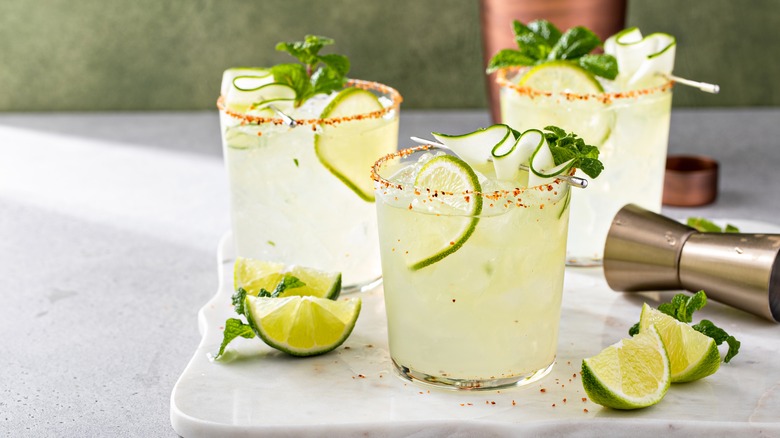What To Know About Margarita Burn Before Your Next Outdoor Party
You're living your best summer party life, soaking up some rays, enjoying the company of friends, and sipping on a few perfectly-crafted margaritas. What could go wrong? Fast forward to a little later in the day when you notice an itchy rash has formed on your skin. Turns out, you've been burned — by your margarita. And unfortunately, what you won't know right away is how mild or severe your reaction will be.
Though it may sound like a joke, a quick Google image search will show that margarita burns are anything but a laughing matter. They can, and do, send people to the hospital with second and even third-degree burns in the worst-case scenarios.
According to Healthline, phytophotodermatitis is the scientific name for a margarita burn. Basically, it's a skin burn that occurs because of a chemical compound known as furocoumarin which is found in an array of plants including citrus fruits. If some of this chemical gets on a person's skin, such as from the integral lime juice used in making margaritas, and the area is exposed to sunlight, the UVA rays trigger a reaction that can result in a rash. It typically develops within about 24 hours. Depending on the amount of lime juice and how long the skin was exposed to sunlight, symptoms can be as mild as just some redness and itchiness that goes away on its own within a day or two. In worse cases, it causes blistering that can take months to heal and may require medical attention.
How to prevent and care for margarita burns
The fingers, hands, and forearms are all typical areas for margarita burns (these are the parts lime juice is likely to squirt on when making a drink). However, there are cases where a drink was spilled on someone's foot or leg. To prevent burning, wash your hands after making each drink. If you're the designated bartender and making a lot of them, you may want to consider disposable gloves. Experts also recommend wearing sunscreen (which should be in play already on a sunny day outdoors) or a long-sleeved shirt. If you're hosting, spread the word to guests about this potential hazard, as many people are unaware. And since limes are present in many summer foods other than margaritas, it's important to take precautions with children who are eating something with lime juice, like freshly squeezed limeade or lime pie ice pops, making parents aware.
If you do develop a rash after getting lime juice on your skin, it can be treated. Similar to how you would treat a sunburn, such as with "cool compresses, anti-inflammatory medication (like ibuprofen), or topical steroids," according to dual board-certified dermatologist, Dr. Keira Barr via Healthline. But if the symptoms don't subside, or turn into blistering, you should seek medical attention. Of course, you could always make frozen margaritas ahead of time and keep a large batch ready in the freezer for party time, skipping the backyard lime fuss and giving you ample to mingle.

